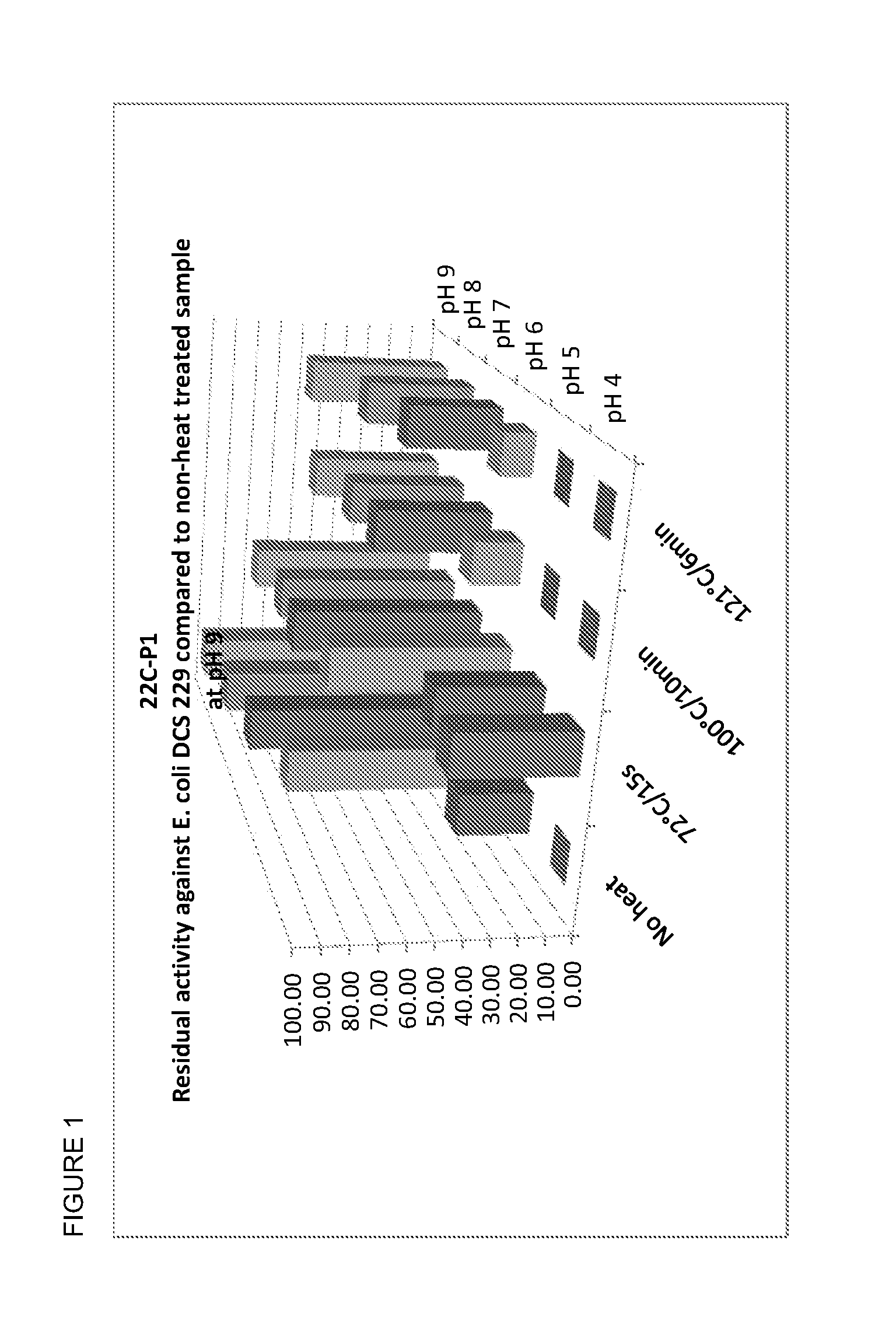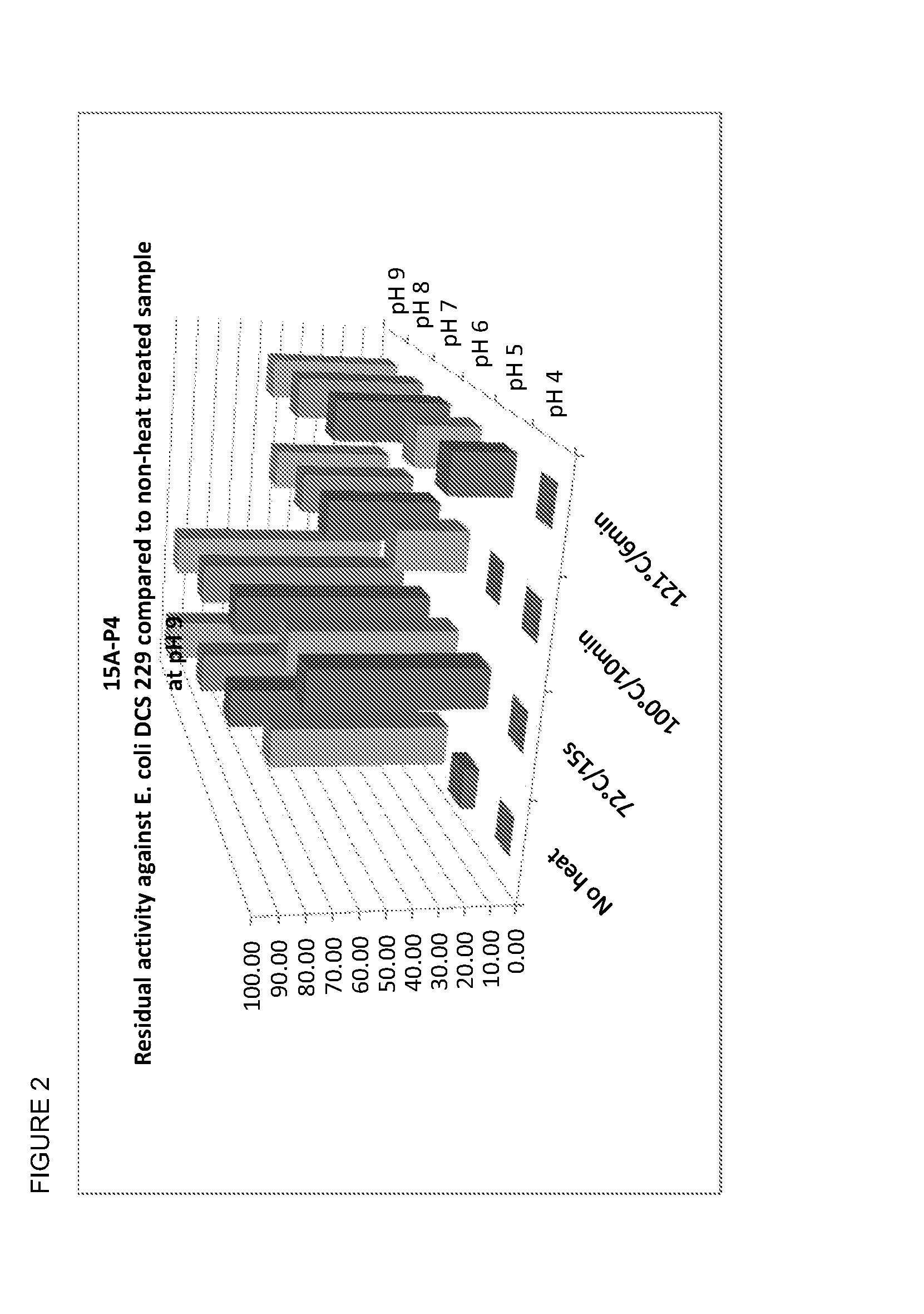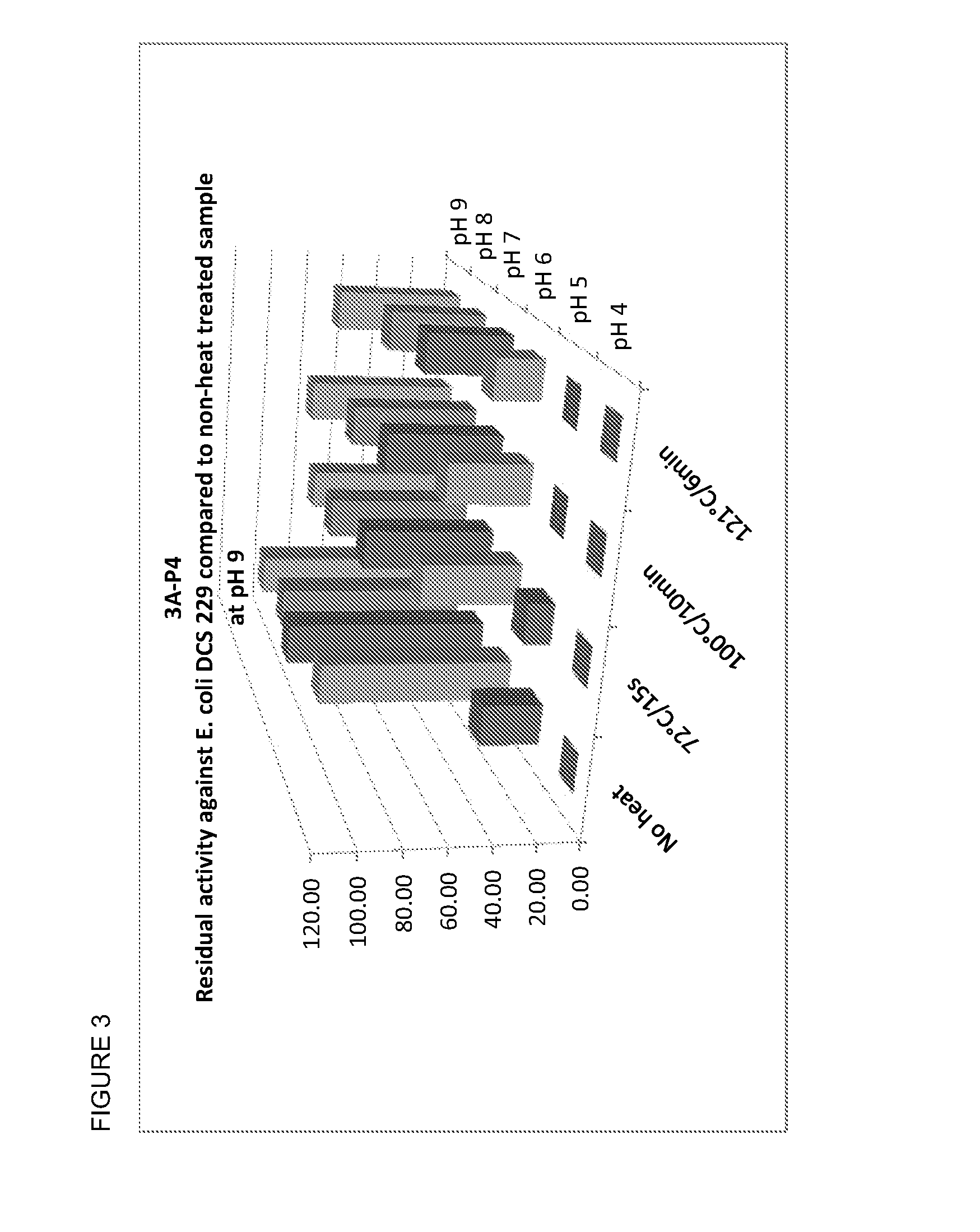Composition
a composition and composition technology, applied in the field of compositions, can solve the problems of discoloration, gassing, malodour, and easy contamination of microbial products by water-based paints, and achieve the effects of improving antibacterial properties, reducing the risk of contamination, and improving antibacterial effects
- Summary
- Abstract
- Description
- Claims
- Application Information
AI Technical Summary
Benefits of technology
Problems solved by technology
Method used
Image
Examples
example 1
Preparation of the Antibacterial Samples Growth of Antimicrobial Strains
[0580]Strains: Bacillus subtilis 22C-P1 (DCS1579), 15A-P4 (DCS1580), 3A-P4 (DCS1581), LSSAO1 (DCS1582), ABP278 (DCS1583) and BS18 (DCS1584) were revived from deep frozen stock cultures on blood agar. An isolated colony of each of the cultures was streaked on CASO agar and incubated aerobically at 32° C. for 24 hours. One colony of each was transferred to 10 ml of CASO broth in a 50 ml SARSTEDT tube and incubated shaking at inclination at 130 rpm at 32° C. for 24 hours. 0.5 ml of the grown culture was transferred to 50 ml of CASO broth in a 250 ml Erlenmeyer flask and incubated shaking at 130 rpm at 32° C. for 24 hours.
Preparation of the Antibacterial Supernatant Samples
[0581]The fully grown cultures were centrifuged twice at 10.000×g for 10 minutes. The supernatant was filter sterilized (using vacuum) and the filtrate was used immediately.
example 2
Inhibition Range Assay
[0582]The well diffusion assay was used to assess the inhibitory range of the cell free supernatants (CFSs) prepared in Example 1 against a number of target microorganisms (Table 1). For each indicator microorganism a plate was made. 30 ml of molten agar media including 3 ml 2M sodium phosphate pH 6.5 was inoculated with 150 μl of a fully grown overnight culture and mixed well. The suspension was poured into omnitrays and let set for 30 minutes. 6 wells were cut with into the agar and left to dry open in a LAF bench for another 30 minutes. Each duplicate well were filled with 100 μl of the supernatants as prepared earlier and incubated at the respective temperature, time and conditions as shown in Table 1. After the incubation time, the hallo diameters were assessed and divided into groups of inhibition. For halo diameters, including the well, up to 10 mm activities were marked with a “+”, for halos up to 16 mm with a “++” and for over 16 mm with a “+++”.
TABLE ...
example 3
Susceptibility of Activity to Heat Treatment and Various pH
[0584]30 ml of the CFS of each strain was divided into 6 aliquots of 5 ml and pH adjusted to pH 4, 5, 6, 7, 8 or 9 using 5M NaOH or 5M HCl. Each pH adjusted 5 ml aliquot was filter-sterilized, divided into 5 aliquots of 0.8 ml and kept at 4° C. until use.
[0585]For each CFS heat treatment was applied as described in Table 5. 6 aliquots, one of each pH value, were heat treated at 72° C. for 15 seconds. The temperature was monitored with a temperature probe in an eppendorf tube filled with 0.8 ml of CASO broth through a hole on the lid. The 15 seconds counted from the moment the temperature reached 72° C. Another 6 aliquots were heat treated at 100° C. for 10 minutes. The temperature was monitored with a temperature probe in an eppendorf tube filled with 0.8 ml of CASO broth through a hole on the lid. The 10 minutes counted from the moment the temperature reached 95° C. 6 aliquots were incubated at 37° C. for 24 hours and anoth...
PUM
| Property | Measurement | Unit |
|---|---|---|
| pH | aaaaa | aaaaa |
| temperature | aaaaa | aaaaa |
| temperature | aaaaa | aaaaa |
Abstract
Description
Claims
Application Information
 Login to View More
Login to View More - R&D
- Intellectual Property
- Life Sciences
- Materials
- Tech Scout
- Unparalleled Data Quality
- Higher Quality Content
- 60% Fewer Hallucinations
Browse by: Latest US Patents, China's latest patents, Technical Efficacy Thesaurus, Application Domain, Technology Topic, Popular Technical Reports.
© 2025 PatSnap. All rights reserved.Legal|Privacy policy|Modern Slavery Act Transparency Statement|Sitemap|About US| Contact US: help@patsnap.com



